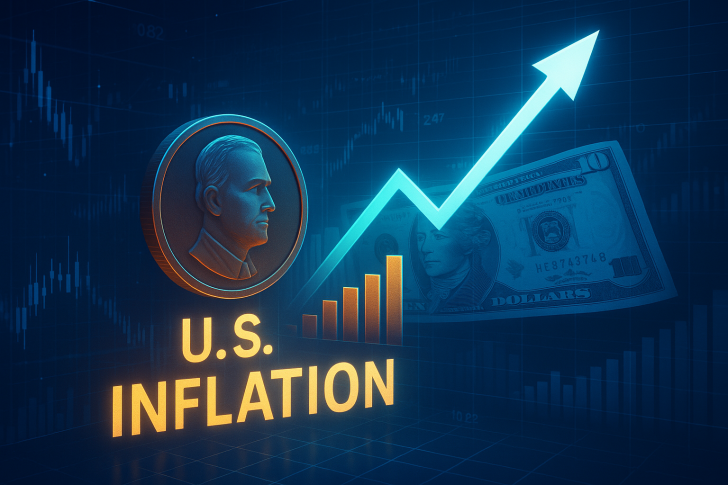After months of cooling price growth, U.S. inflation has turned higher again, catching markets off guard and complicating the Federal Reserve's path forward. The September reading marks a notable shift, pushing inflation back above key thresholds and forcing traders to reassess rate cut expectations.
Inflation Accelerates Beyond Expectations
According to data highlighted by trader That Martini Guy ₿, the Consumer Price Index for September jumped to 2.9%, up from 2.3%. This rebound above the Fed's preferred 2.25% threshold suggests price pressures aren't cooling as quickly as anticipated. The move follows a mid-year plateau and points to renewed momentum in energy, shelter, and services sectors.
Markets reacted swiftly. Treasury yields climbed, with the 10-year briefly approaching 4.7%, while the dollar strengthened as traders reconsidered early rate cuts. Stocks opened mixed, with tech showing weakness while defensive assets like gold attracted buying interest. The pattern suggests potential reacceleration if pressures persist through Q4.
What's Driving the Surge
Several factors are pushing inflation higher: energy costs rebounded in late summer as crude and fuel prices climbed; housing and rent remain sticky, with shelter affordability pressuring urban markets; and labor strength persists, with elevated wage growth supporting consumer demand despite higher rates. While food and used vehicles show minor relief, the broader picture suggests persistent inflation rather than a temporary spike.
Fed's Dilemma Deepens
The climb to 2.9% undermines the Fed's narrative that inflation was steadily approaching its 2% target. With core indicators stubbornly high, markets now expect prolonged tightness or delayed cuts. If inflation stays elevated through year-end, the Fed may need to keep rates higher for longer, potentially restraining credit markets and confidence. The September data confirm the inflation battle isn't won yet, and the Fed's next moves will likely define market tone into early 2026.
 Victoria Bazir
Victoria Bazir

 Victoria Bazir
Victoria Bazir

